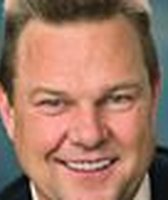Stand up for the facts!
Our only agenda is to publish the truth so you can be an informed participant in democracy.
We need your help.
I would like to contribute

Art Helmrich, right, and Warren Hendrickson prepare a large pot of hot oatmeal for breakfast at the Holy Ground Homeless Shelter in Hudson, Fla. (Tampa Bay Times photo)
All signs point to income inequality as a key topic for President Barack Obama and his fellow Democrats in 2014, starting with his State of the Union address on Jan. 28. Meanwhile, as Obama has increasingly focused on inequality, critics have worked to find poke in his arguments.
Income inequality is an issue that PolitiFact has analyzed frequently since we started fact-checking political claims in 2007. So in the run-up to the State of the Union address, we thought it was a good time to review some of these claims, from both sides.
We’ve been able to draw a few conclusions from the specific claims we’ve checked. Economic mobility does seem to have declined in recent years, while income inequality has increased. Having a full-time job, even a low-wage one, tends to keep people out of poverty. And a majority of Americans tell pollsters that money and wealth in this country should be more evenly distributed.
In general, we found just a few False statements and none that merited a Pants on Fire rating, perhaps because these claims are often linked to publicly available government data, which limits how far speakers can stray from the truth.
Poverty and low incomes
Sign up for PolitiFact texts
• "If you have a job in this country, (there's a) 97 percent chance that you're not going to be in poverty." -- Rep. Steve Southerland, R-Fla.
Southerland was correct if you look at Americans who have full-time jobs. If people with full-time jobs and part-time jobs are included, then the percentage drops to 93 percent. Still, his claim was pretty close. We rated it Mostly True.
• "A quarter of our workers make $18,000 per year." -- Teresa Ghilarducci, economist at the New School in New York City.
Part-time jobs also served as a complicating factor for Ghilarducci. The number she cited included lots of people whose low incomes stemmed from working in a part-time job, or from working for just part of the year. Among workers who had full-time jobs for the whole year just shy of 9 percent earned $18,000 or less. Neither figure is perfect, but both have merit, so we rated her claim Half True.
• "About 2 percent of Americans get paid the minimum wage." -- Sen. Rob Portman, R-Ohio.
Portman would have been more accurate had he said that about 2 percent of American workers (not "Americans") get paid at or below the federal minimum wage (rather than just at the minimum wage). Still, his number is close, and his general point -- that workers who are paid the federal minimum-wage represent a small percentage of the entire working population -- is valid. We rated his claim Mostly True.
• "44% of homeless people are employed." -- Facebook posts.
When we tracked down the data used in this Facebook post, it turned out to be 18 years old, and the percentage of those who had a regular job -- as opposed to temporary, day-labor or peddling jobs -- was less than half that. On the other hand, experts said this was the most recent data available and that the definitions of "employed," while generous, was not unreasonable. On balance, we rated the claim Half True.
• "On (the federal minimum wage of) $7.75, you can’t even make half the poverty level." Rep. Jim McDermott, D-Wash.
McDermott was wrong about what the federal minimum wage is -- it’s $7.25. More important, the federal poverty level depends on the size of the family in question, with larger families having a higher threshold. At $7.75, McDermott’s claim would only be true for seven-person families -- a small fraction of all households. Combined, these two problems led us to rate his claim False.
Economic mobility
• The United States is "behind many countries in Europe in terms of the ability of every kid in America to get ahead." -- Steven Rattner, former Treasury Department official who oversaw the restructuring of the auto industry under Obama.
Some conservative economists say international comparisons of economic mobility are imperfect, that we need better data, and that Americans are doing fine if you look at their ability to simply out-earn their parents -- a measure we aren’t able to compare to European countries. Still, many studies back up Rattner’s point, particularly in Nordic countries. We rated the claim Mostly True.
• In the 1980s, "the lowest income people had the biggest gains." -- Steve Moore, Wall Street Journal editorial page editor.
Americans of high-, middle- and low incomes did see earnings rise during the 1980s, but it was actually those at the top of the income pyramid who saw the biggest gains. In reality, the lowest-income Americans chalked up the smallest gains. So we rated Moore’s claim False.
Distribution of wealth
• "The income of the top 1 percent nearly quadrupled from 1979 to 2007, but the typical family’s incomes barely budged." -- Obama.
We turned to calculations by the Congressional Budget Office, a highly credible, nonpartisan agency. They showed that incomes increased by 275 percent for the top 1 percent, which is pretty close to quadrupling. For average households, incomes rose by comparatively modest amounts. We rated Obama’s claim True.
• "Nearly 6 out of 10 believe that money and wealth should be more evenly distributed among a larger percentage of the people in the U.S." -- Sen. Bernie Sanders, I-Vt.
Sanders accurately reported the results of a longstanding question by Gallup. The most recent data released before Sanders made his comment came from a survey taken April 4-7, 2013. It found that 59 percent of respondents agreed that "the money and wealth in this country should be more evenly distributed among a larger percentage of the people," while 33 percent said the distribution was fair. That was close enough for us to rate it True.
• The ratio of CEO pay to average worker pay in the U.S. is 475 to 1. -- Facebook posts.
This was a textbook example a claim spiraling out of control on the Internet. While the chart’s underlying point is likely valid -- that the ratio of CEO pay to worker pay is high in the United States -- the Facebook post provided a false sense of statistical precision. In reality, the chart originated in a class project by three graduate students in 2005, and the 475-to-1 ratio was not properly footnoted. Other estimates have been lower -- 185 to 1 in one study and 325 to 1 in another. We rated the claim False.
• From 1947 to 1979, family incomes for rich, middle-income and poor Americans grew about the same rate. But since 1979, incomes for rich families have grown much faster. -- United for a Fair Economy, a liberal advocacy group.
We re-did the math and came up with some slightly different numbers, but the tallies were extremely close. Experts note some methodological imperfections with these kinds of studies -- including their failure to account for the value of employer-provided health care and Medicare -- but we found broad agreement about the overall trend. We rated the claim Mostly True.
Our Sources
See original Truth-O-Meter items.






































